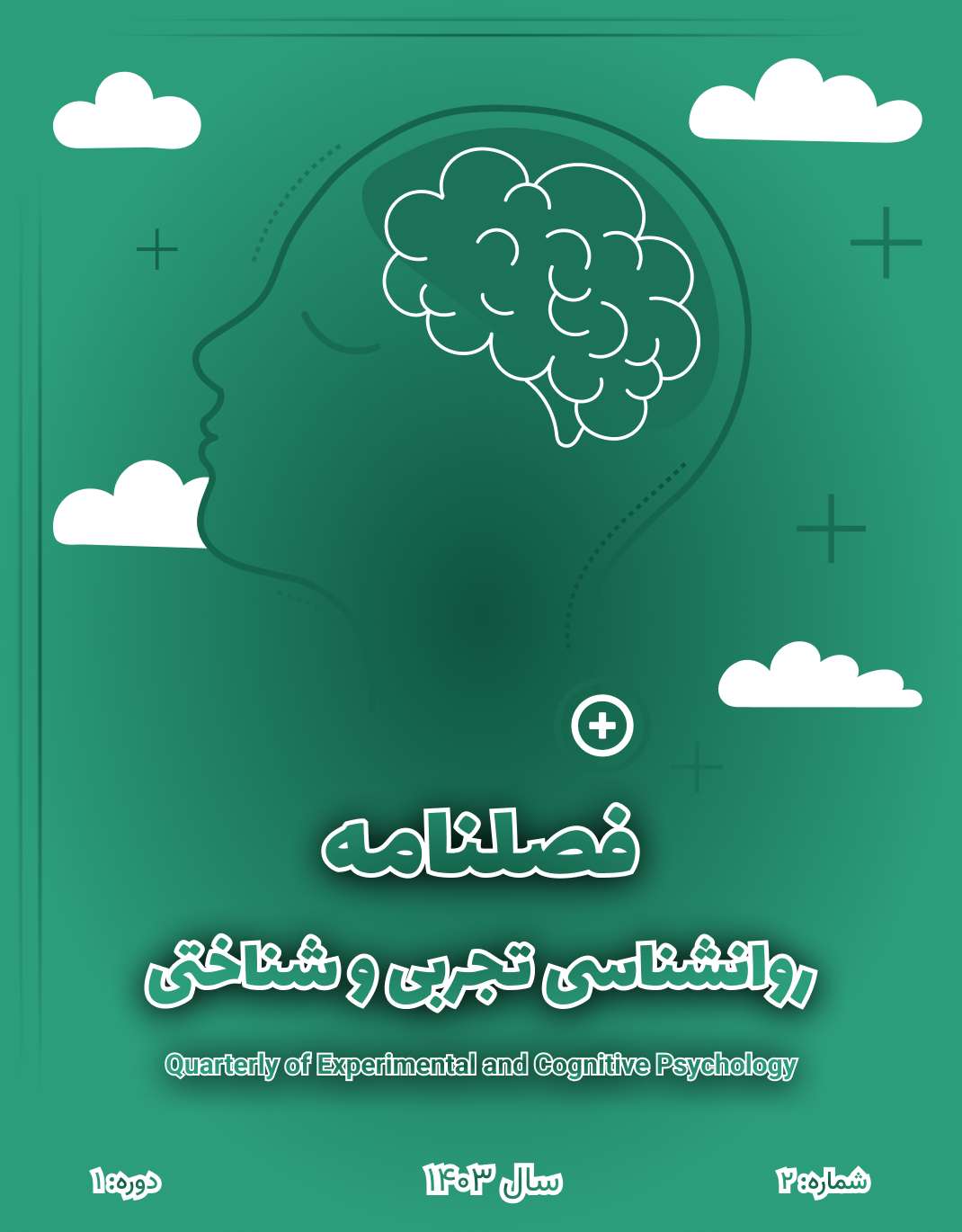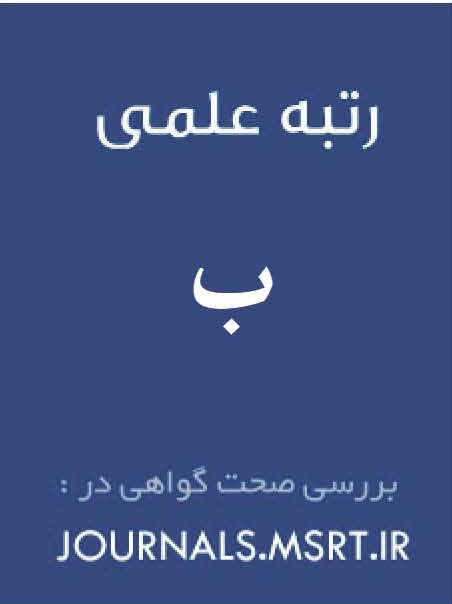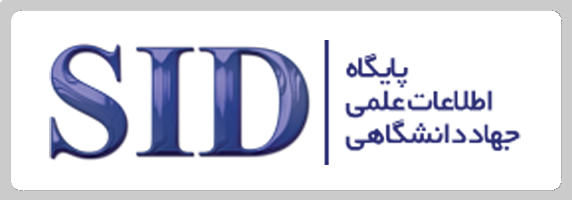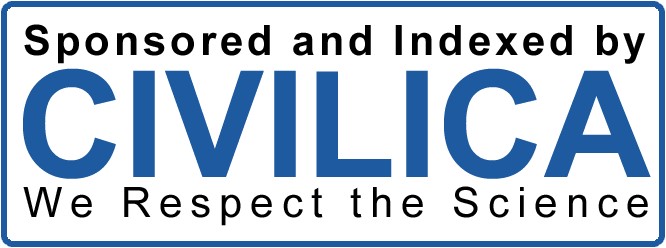ارزیابی ویژگیهای روانسنجی نسخه فارسی "مقیاس مه مغزی " در متأهلین شهر رفسنجان
کلمات کلیدی:
پایایی, تحلیل عاملی, روایی, روانسنجی, مه مغزیچکیده
هدف: پژوهش حاضر با هدف ترجمه و ارزیابی ویژگیهای روانسنجی "مقیاس مه مغزی" در متأهلین ساکن در شهرستان رفسنجان انجام شد.
مواد و روش: مطالعه حاضر از نوع روششناسی بود. جامعه آماری پژوهش حاضر را تمام متأهلین ساکن در شهرستان رفسنجان در سال ۱۴۰۱-۱۴۰۲ تشکیل میدادند که ۲۰۰ نفر از آنها به روش نمونهگیری در دسترس وارد مطالعه شدند. ابتدا نسخه اصلی به فارسی ترجمه شد. پس از آن ترکیب و تلفیق ترجمههای اولیه به یک ترجمه واحد صورت گرفت. نسخه نهایی ترجمه شده از فارسی به انگلیسی و در نهایت نسخه ترجمه شده مورد بازنگری، اصلاح و جمع بندی قرار گرفت. نسبت و شاخص روایی محتوا، روایی سازه با روش تحلیل عاملی اکتشافی و تأییدی و روایی همگرا اندازهگیری شد. پایایی به روش همسانی درونی با محاسبه ضریب آلفای کرونباخ انجام شد. تحلیل دادهها با نرمافزارهای آموس نسخه 24، اسمارت نسخه 3 و اس پی اس اس نسخه ۲۴ در سطح معناداری 05/0 انجام پذیرفت.
یافتهها: نسبت روایی محتوا براساس نظر 10 نفر از متخصصان بالاتر از 62/0 و شاخص روایی محتوا نیز بالاتر از 79/0 برای همه عبارتها به دست آمد. تحلیل عاملی تائیدی نشان داد که همه شاخصهای برازندگی از برازش قابل قبول الگوی تک عاملی مقیاس با دادههای گردآوری شده حمایت کردند و بارهای عاملی همه عاملها به استثنای عبارت شماره 9 بالاتر از 33/0 به دست آمد. بین نمره کل مه مغزی با نمره کل و نیز ۵ زیر مقیاس خستگی عمومی، خستگی جسمی، کاهش فعالیت، کاهش انگیزه و خستگی ذهنی همبستگی مستقیم و معنادار وجود داشت (05/0>P). نتایج ضریب آلفای کرونباخ 97/0 دست آمد. نسخه فارسی "مقیاس مه مغزی" با 19 عبارت، روا و پایا میباشد. "
نتیجهگیری: مقیاس مه مغزی" در بین متأهلین غیربالینی شهرستان رفسنجان همانند نسخه اصلی، میتواند بهعنوان ابزار مناسبی برای ارزیابی مه مغزی مورد استفاده قرار گیرد. لذا استفاده از این ابزار برای اندازهگیری این سازه برای جمعیت غیربالینی پیشنهاد میگردد.
دانلودها
مراجع
Aghajani Mir, M. (2024). Brain fog: A narrative review of the most common mysterious cognitive disorder in COVID-19. Molecular Neurobiology, 61(12), 9915-9926. https://doi.org/10.1007/s12035-023-03715-y
Alim-Marvasti, A., Ciocca, M., Kuleindiren, N., Lin, A., Selim, H., & Mahmud, M. (2024). Subjective brain fog: A four-dimensional characterization in 25,796 participants. Frontiers in human neuroscience, 18(1), 1-11. https://doi.org/10.3389/fnhum.2024.1409250
Bell, T., Crowe, M., Novack, T., Davis, R. D., & Stavrinos, D. (2023). Severity and correlates of brain fog in people with traumatic brain injury. Research in Nursing & Health, 46(1), 136-147. https://doi.org/10.1002/nur.22280
Chasco, E. E., Dukes, K., Jones, D., Comellas, A. P., Hoffman, R. M., & Garg, A. (2022). Brain fog and fatigue following covid-19 infection: An exploratory study of patient experiences of Long COVID. International journal of environmental research and public health, 19(23), 1-12. https://doi.org/10.3390/ijerph192315499
Dass, R., Kalia, M., Harris, J., & Packham, T. (2023). Understanding the experience and impacts of brain fog in chronic pain: A scoping review. Canadian Journal of Pain, 7(1), 1-20. https://doi.org/10.1080/24740527.2023.2217865
Delgado-Alonso, C., Díez-Cirarda, M., Pagán, J., Pérez-Izquierdo, C., Oliver-Mas, S., Fernández-Romero, L., Martínez-Petit, Á., Valles-Salgado, M., Gil-Moreno, M. J., Yus, M., Matías-Guiu, J., Ayala, J. L., & Matias-Guiu, J. A. (2025). Unraveling brain fog in post-COVID syndrome: Relationship between subjective cognitive complaints and cognitive function, fatigue, and neuropsychiatric symptoms. European Journal of Neurology, 32(1), 1-10. https://doi.org/https://doi.org/10.1111/ene.16084
Eberle, D. J., & Maercker, A. (2022). Preoccupation as psychopathological process and symptom in adjustment disorder: A scoping review. Clinical Psychology & Psychotherapy, 29(2), 455-468. https://doi.org/10.1002/cpp.2657
Elliott, T. R., Hsiao, Y. Y., Randolph, K., Urban, R. J., Sheffield-Moore, M., Pyles, R. B., Masel, B. E., Wexler, T., & Wright, T. J. (2023). Efficient assessment of brain fog and fatigue: Development of the Fatigue and Altered Cognition Scale (FACs). PLoS One, 18(12), 1-15. https://doi.org/10.1371/journal.pone.0295593
Ettleson, M. D., Raine, A., Batistuzzo, A., Batista, S. P., McAninch, E., Teixeira, M., Jonklaas, J., Laiteerapong, N., Ribeiro, M. O., & Bianco, A. C. (2022). Brain fog in hypothyroidism: Understanding the patient's perspective. Endocrine Practice, 28(3), 257-264. https://doi.org/10.1016/j.eprac.2021.12.003
Golkar, F., Bahrami, M., Kakavand, A., Mansoobifar, M., & Zam, F. (2025). The structural model of predicting internet addiction based on mindfulness with the mediation of mind wandering in students of the second secondary school in Tehran. Journal of Health Promotion Management, 13(5), 1-11. http://jhpm.ir/browse.php?a_id=1793&sid=1&slc_lang=fa&ftxt=1
Goodman, S. P. J., & Marino, F. E. (2021). Thirst perception exacerbates objective mental fatigue. Neuropsychologia, 150(1), 1-10. https://doi.org/10.1016/j.neuropsychologia.2020.107686
Gu, Q., Wang, L., King, T. Z., Chen, H., Zhang, L., Ni, J., & Mao, H. (2024). Seeing through "brain fog": Neuroimaging assessment and imaging biomarkers for cancer-related cognitive impairments. Cancer Imaging, 24(1), 1-16. https://doi.org/10.1186/s40644-024-00797-2
Guo, Z., Chen, R., Zhang, K., Pan, Y., & Wu, J. (2016). The impairing effect of mental fatigue on visual sustained attention under monotonous multi-object visual attention task in long durations: An event-related potential based study. PLoS One, 11(9), 1-13. https://doi.org/10.1371/journal.pone.0163360
Kline, R. B. (2016). Principles and Practice of Structural Equation Modeling. Guilford Press. https://books.google.com/books?hl=en&lr=&id=t2CvEAAAQBAJ&oi=fnd&pg=PP1&dq=Kline,+R.+B.+(2016).
Kovalchuk, A., & Kolb, B. (2017). Chemo brain: From discerning mechanisms to lifting the brain fog-An aging connection. Cell Cycle, 16(14), 1345-1349. https://doi.org/10.1080/15384101.2017.1334022
Kunasegaran, K., Ismail, A. M. H., Ramasamy, S., Gnanou, J. V., Caszo, B. A., & Chen, P. L. (2023). Understanding mental fatigue and its detection: A comparative analysis of assessments and tools. Peerj, 11(1), 1-27. https://doi.org/10.7717/peerj.15744
Lawshe, C. H. (1975). A quantitative approach to content validity1. Personnel psychology, 28(4), 563-575. https://doi.org/10.1111/j.1744-6570.1975.tb01393.x
Marcora, S. M., Staiano, W., & Manning, V. (2009). Mental fatigue impairs physical performance in humans. Journal of Applied Physiology, 106(3), 857-864. https://doi.org/10.1152/japplphysiol.91324.2008
Meyers, L. S., Gamst G, Guarino AJ. (2006). Applied multivariate research, design and interpretation. Sage publication.
Ocon, A. J. (2013). Caught in the thickness of brain fog: exploring the cognitive symptoms of Chronic Fatigue Syndrome. Frontiers in Physiology, 4(1), 63-73. https://doi.org/10.3389/fphys.2013.00063
Paul, R., Zhang, Y. Y., Goldberg, S. I., Weyman, E. A., & Chan, A. W. (2022). Decoding brain fog in head and neck cancer survivors using artificial intelligence. International Journal of Radiation Oncology, Biology, Physics, 114(3), e95-e96. https://doi.org/10.1016/j.ijrobp.2022.07.883
Ross, A. J., Medow, M. S., Rowe, P. C., & Stewart, J. M. (2013). What is brain fog? An evaluation of the symptom in postural tachycardia syndrome. Clinical Autonomic Research, 23(6), 305-311. https://doi.org/10.1007/s10286-013-0212-z
Sasahara, I., Fujimura, N., Nozawa, Y., Furuhata, Y., & Sato, H. (2015). The effect of histidine on mental fatigue and cognitive performance in subjects with high fatigue and sleep disruption scores. Physiology & Behavior, 147(1), 238-244. https://doi.org/10.1016/j.physbeh.2015.04.042
Shamsi, A., Yaghmaei, F., & Zayeri, F. (2014). Validity and reliability of "Multidimensional Symptoms Fatigue Inventory-Short Form"(MSFI-SF). Journal of Ilam University of Medical Sciences, 22(5), 63-69. https://sjimu.medilam.ac.ir/browse.php?sid=1&a_id=1495&slc_lang=en
Smets, E. M., Garssen, B., Bonke, B., & De Haes, J. C. (1995). The Multidimensional Fatigue Inventory (MFI) psychometric qualities of an instrument to assess fatigue. Journal of psychosomatic research, 39(3), 315-325. https://doi.org/10.1016/0022-3999(94)00125-O
Soleimani, K., Sohrabi F, Kalantari M. (2021). Evaluating the effect of mental fatigue and situational awareness on the cognitive performance of airline pilots: The moderating role of sources of stress. Social Cognition, 10(19), 99-118. https://doi.org/10.30473/sc.2021.58232.2665
Taquet, M., Geddes, J. R., Husain, M., Luciano, S., & Harrison, P. J. (2021). 6-month neurological and psychiatric outcomes in 236 379 survivors of COVID-19: a retrospective cohort study using electronic health records. Lancet Psychiatry, 8(5), 416-427. https://doi.org/10.1016/S2215-0366(21)00084-5
Van Cutsem, J., Marcora, S., De Pauw, K., Bailey, S., Meeusen, R., & Roelands, B. (2017). The effects of mental fatigue on physical performance: A systematic review. Sports medicine, 47(8), 1569-1588. https://doi.org/10.1007/s40279-016-0672-0
Waltz, C. F., & Bausell, R. B. (1981). Nursing Research: Design, Statistics, and Computer Analysis. F.A. Davis Company. https://dl.acm.org/doi/abs/10.5555/578318
Westenberger, A., Nöhre, M., Brähler, E., Morfeld, M., & de Zwaan, M. (2022). Psychometric properties, factor structure, and German population norms of the Multidimensional Fatigue Inventory (MFI-20). Frontiers in Psychiatry, 13(1), 1-10. https://doi.org/10.3389/fpsyt.2022.1062426
دانلود
چاپ شده
ارسال
بازنگری
پذیرش
شماره
نوع مقاله
مجوز
حق نشر 2025 انیس میرزائی (نویسنده); ماهگل توکلی

این پروژه تحت مجوز بین المللی Creative Commons Attribution-NonCommercial 4.0 می باشد.





